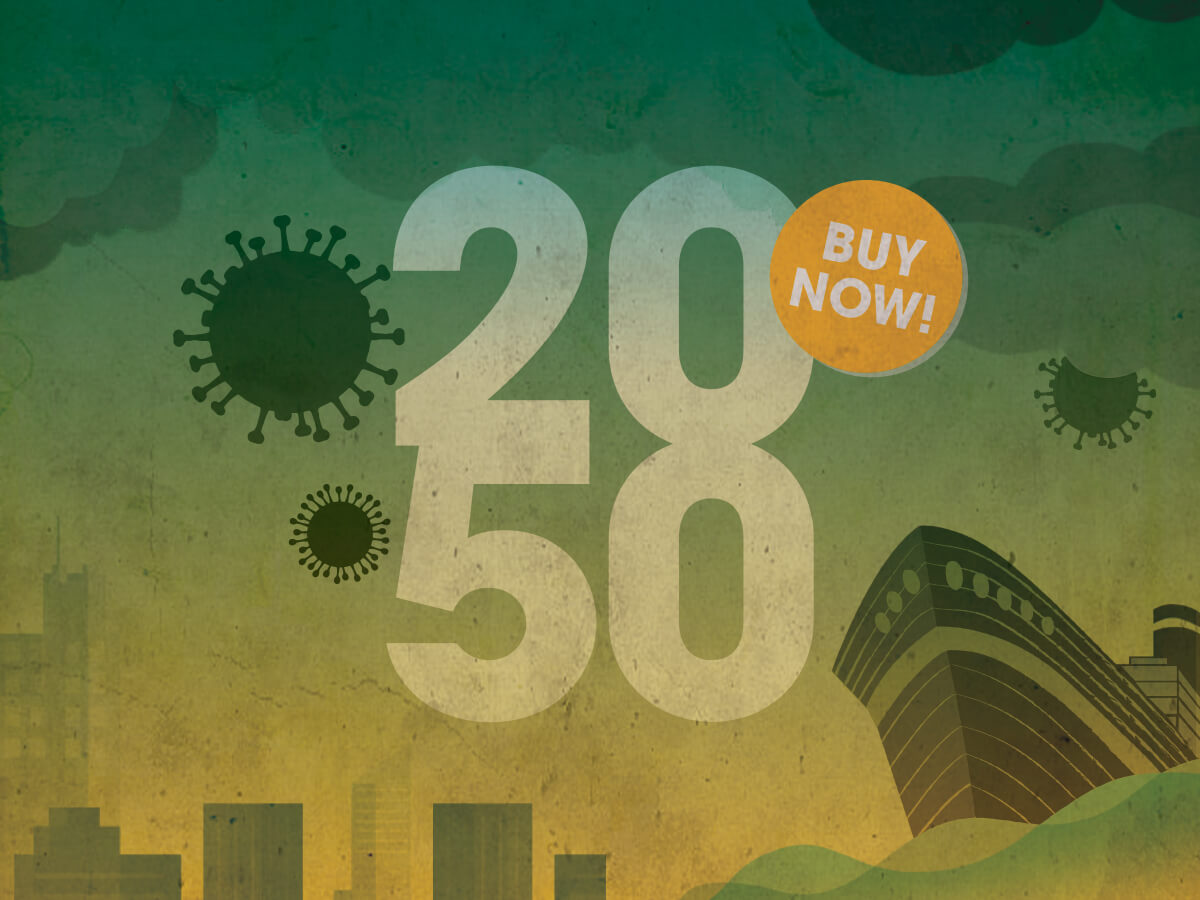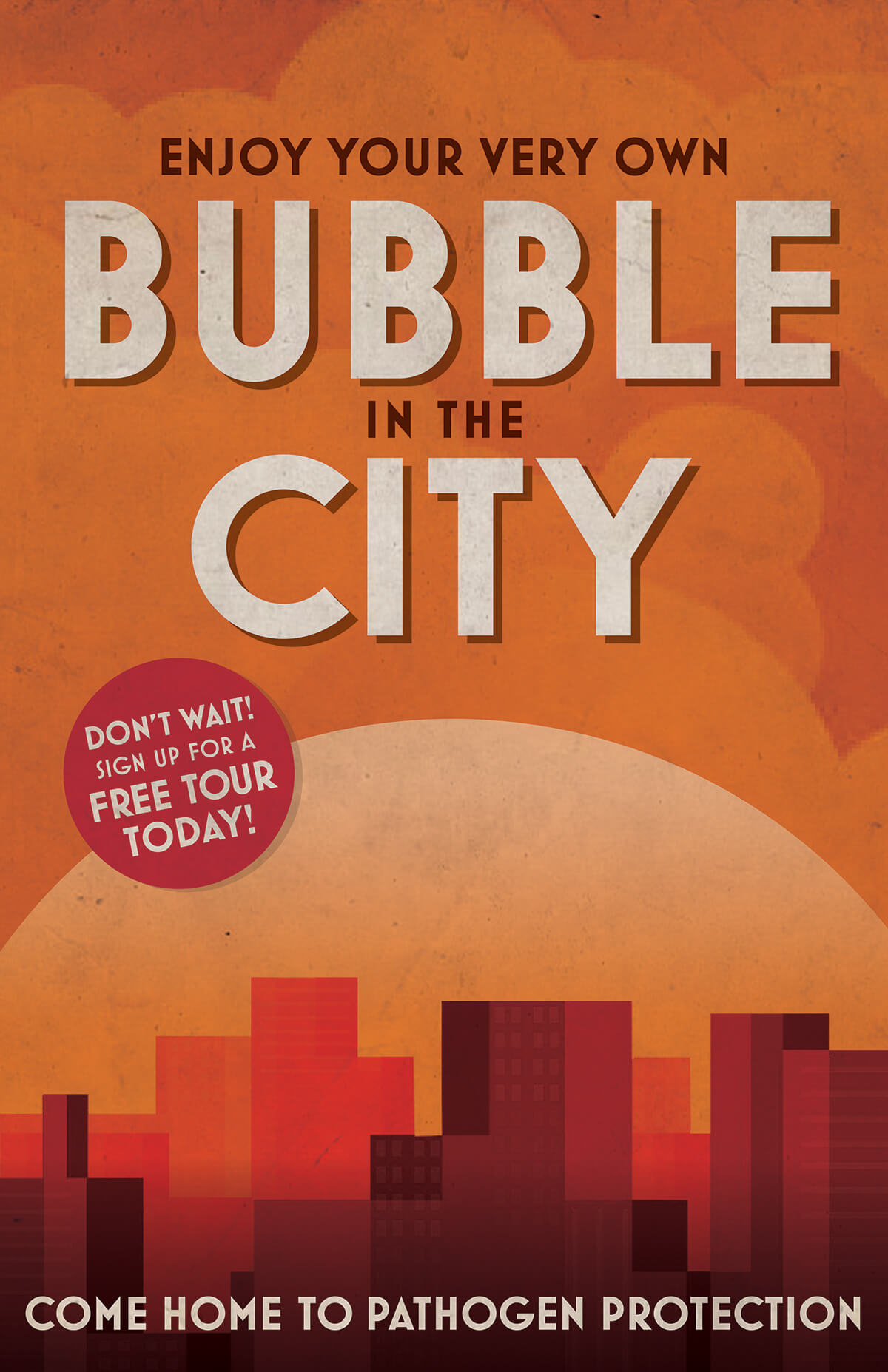
BUY NOW: City life in the bubble
The government sided with the protestors this time, conceding to the placards insisting “Public health before hockey wealth.” Instead of funding the new arena, they’ll install sensors in the sewers to detect and map pathogens.
These days, urbanites talk about villages, not so much suburbs. Since COVID-19 and SARS-28 entrenched a slower pace of life for most, cities began mimicking Melbourne’s 20-minute neighbourhood, where daily life unfolds within the boundaries of a 20-minute bike ride.
Many cities have already expanded parks and public hand-washing terminals, enlarged sidewalks and bike lanes, added vegetable gardens and outfitted key buildings with solar panels and batteries to provide energy in an emergency.
After a flurry of reforms and the odd bold decision, density increased while crowding decreased. Rethinking—and remarketing—public transport proved difficult since so many lost trust in it after being told to avoid crowds (especially after the 2028 outbreak) but quantum computing enabled fleets of driverless electric mini-buses that now coordinate like an ant colony.
They also track cell phone movements for the public health agency, which has proved beneficial and, so far, resistant to prying police agencies.
Our experts from 2020 weigh in:
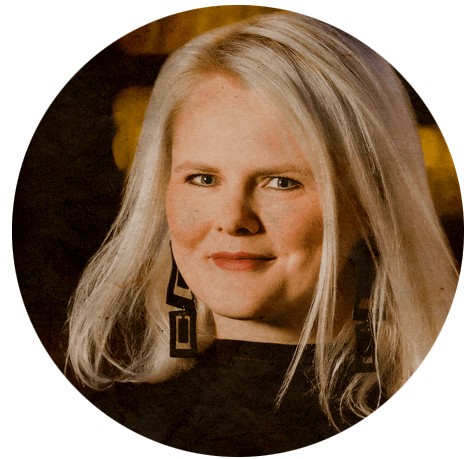
Johanna Hurme [MArch/02, BEnvD/99] is co-founder of the acclaimed firm 5468796 Architecture, who’s behind projects like Old Market Square CUBE and 62M (aka, the “flying saucer” at the foot of the Disraeli Bridge.)
“We’ve awakened to the idea of what cities could be like with fewer cars, which take up an enormous amount of space and resources. People also now realize how much they need social connections and well-designed cities can provide that.
We need to think about healthy density. People can still live in tighter, well-designed quarters as opposed to spreading out.
The biggest and fastest growing demographic in Canada right now is for single-person households but to meet that housing need we don’t want to respond with small units in large towers, which detaches people from the ground level and from each other in these vertical ghettos. Large towers are how you create isolated communities.
We want want mid-rise buildings—up to six storeys—like in older European cities, so you can still recognize faces from the street, can call somebody up from your balcony, and encourage people to take the stairs.
We also need to rethink offices. Now that we know many of us can work from home, rather than expand space to accommodate distancing directives, we can have rotating groups of people coming into the office, so we maintain connection, healthy non-crowding spaces, and reduce transportation emissions.
Going forward, buildings will have to account for this flexibility with modular furniture, outlets that can move, walls that can change—things that allow for expansion and contraction.”
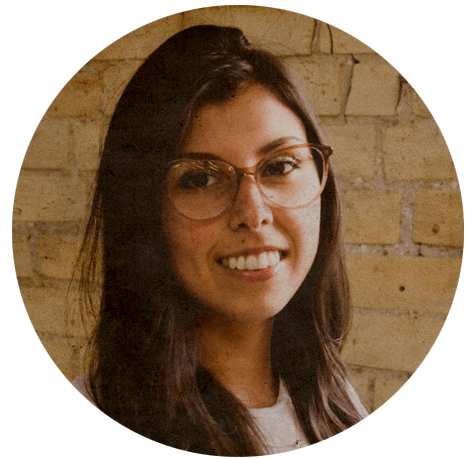
Architecture master’s student Danielle Desjarlais [BEnvD/17], who is Cree and Métis, was an intern with Brook McIlroy’s Indigenous Design Studio and collaborated on a building in Shoal Lake, Ont., resembling a traditional birch bark canoe—an idea borne from learning from the land and its people.
“The future of apartments and offices is a difficult challenge because those are colonial typologies, and I’m not saying we go back to teepees, but we need to rethink them.
There are ways to incorporate healthier lifestyles and connection to the land within these structures. [For example], if we’re taking up a certain area of land, it should be a given to have a green roof. We must listen to the land.
That philosophy goes hand in hand with architecture in our cities…. If we have to now design with public health in mind, building codes are going change. We’re going to need openness and air. We’re going to have to think in new ways, and we’re going to have to share and learn and listen if we’re going to do things better.”
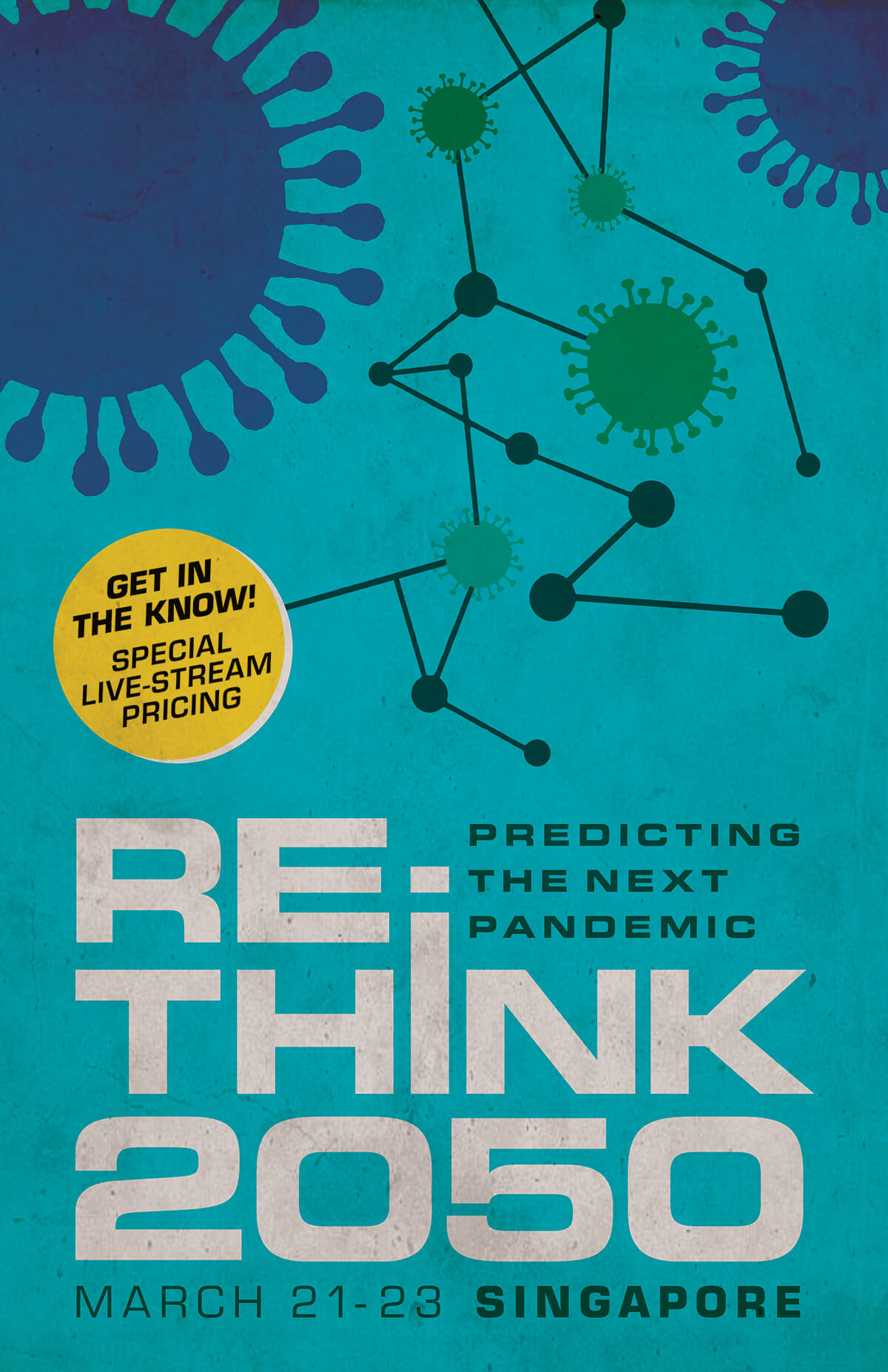
BUY NOW: a front-row seat to hear what will strike next
The speaker lineup for the Virology Rethink Conference 2050 is impressive.
Epidemiologists, virologists, microbiologists, biologists, clinicians and computer scientists from around the world will invade Singapore to share the latest in pandemic preparedness. Alongside them, members of the public will scoop up passes, too.
They’ll hear the experts talk about climate change’s growing impact on infectious disease rates, where resources need to be directed to stem the next outbreak, and how artificial intelligence can better inform vaccine development and health policy.
Novel respiratory infections have steadily increased since SARS in 2002, and insect-borne diseases have been rapidly spreading across the globe as well.
We have made acceptable progress in cataloguing the 1.7 million diseases thought to be lurking in animal populations, with advances in AI having only just begun to provide us with reliable risk assessments for where the next major spillover event could occur, which we have long-known contain three variables: lots of people, lots of plants and animals, lots of environmental change.
Yet still, given this new tool, we remain too slow in putting forth a global effort to respond with sufficient resources to curb disease spread. Rethink 2050 will have many panel discussions and workshops addressing this shortcoming.
Lectures will discuss new AI-generated models, the disease equivalent of weather radar—Since we cannot tell subsistence hunters how to live, can we provide them with better information that limits their encounters with disease vectors? How can we use this tool in a culturally appropriate way?
A featured workshop, co-hosted by UM’s Transport Institute, speaks to shoring up your 3D-printing supply chain in a crisis, from PPE to pipettes. Also on the list, panels debating: “How we can predict the next pandemic?” and “Why do we keep making the same mistakes?”
Our experts from 2020 weigh in:
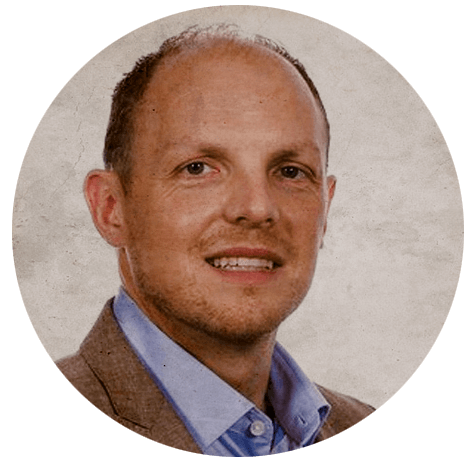
Jason Kindrachuk is assistant professor in the department of medical microbiology, a Canada Research Chair in molecular pathogenesis of emerging and re-emerging viruses at UM, and a member of the Vaccine and Infectious Disease Organization — International Vaccine Centre, which is investigating COVID-19 vaccines. His work on the Ebola outbreak in West Africa in 2016 informed the global response to COVID-19.
“The basic premise is: something is going to happen, we just don’t know when. And this unpredictability is unattractive to funding agencies.
But, if you look back on the West African Ebola outbreak, which I worked on, and with COVID-19 now, what we see is that if we would have invested more money upfront, to try and identify where these viruses are hiding, or better prepare vulnerable regions of the world to deal with these diseases when they start to emerge, it would cost less than the economic toll that we’re finding ourselves in now.
If you look at investment versus outcome, I think it’s a no-brainer. But, there will always be the thinking of, Why should we keep investing in something when we don’t know if it’s going to be a problem in the future? And that’s going to be what holds back infectious disease research.
Since the novel SARS outbreak from 2002 to 2004, we continue to fund research in the same way, and that needs to change. We increase funding into one area, the honeymoon wears off, and we decide that coronaviruses aren’t that big of a deal.
Then MERS emerged but didn’t spread far and all the funding agencies shrugged and went on to the next thing. We saw it with Zika virus and COVID-19. We will be making the same complaints in 2050.
We need to focus more on infectious disease research and surveillance, not rapid response funding. How do we get there?”
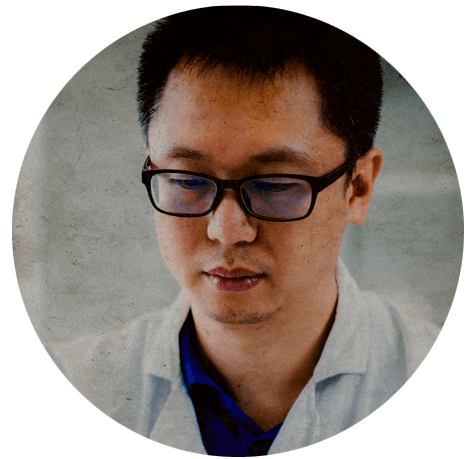
Gary Wong [PhD/14] is a medical microbiologist who developed a way to use guinea pigs as a model to study Ebola’s transmission, and helped develop the Ebola vaccines ZMAb and ZMapp. During COVID-19, he helped run a diagnostics lab near Hubei Province, China, to support Chinese efforts to identify the disease during the early stages of the outbreak.
“Some of the pathogens that cause problems, we know about for a long time, but they don’t cause significant problems until something changes—like Zika virus. It was first reported in 1947 in Uganda but spread very slowly until it hit Brazil in 2014.
Many other viruses, like COVID-19, are completely novel and come out of nowhere. We’re caught off guard all the time.
But we’ll likely be at a point in 2050 where we will know the risk of an impending outbreak. We know these diseases are coming from animals, so it’s a matter of putting the variables together—like climate, and densities and proximities of human and animal populations. We do similar predictions every year with the flu.
But one of the biggest roadblocks we have to developing vaccines is we don’t have good animal models. There’s no way around it, you need good animal models to test vaccines and you can’t just use any animal.
So, I think another question to ask is: Is there a better way to create animal models? We’ve known about the SARS virus since 2002 but we still don’t have a good animal model for it.
So we can develop vaccines, but we don’t really know how good they will be because we don’t have a good model to test it in. One exception in all this is Ebola, and the reason we were able to develop a vaccine for it is because we had good animal models.”
BUY NOW: Ways to learn like never before
“Join me in the small intestine and let’s see how its lining differs from the large intestine,” the middle-school teacher tells her students, who peer through virtual reality goggles. Schools are just starting to gain access to this technology too, allowing rural ones in particular to explore art and science museums on a regular basis.
Some parents and students vacillate between preferring schools with technologies infused throughout classes and corridors, or those that discard these tools and use traditional methods, such as “chalk and talk.” But one thing most now agree on: They prefer the four-day work and school week, adopted to address the climate crisis.
That was a monumental political tussle, as was the biggest shift in education: altering curriculum and assessment tools to allow cross-disciplinary inquiry. For instance, in high schools—which now start at 10 a.m. to account for adolescent circadian rhythms—teachers work in teams to explore one area of inquiry from a variety of perspectives.
The English teacher discusses narratives about trees and the symbolism of its branches, while the science teacher examines matters relating to soil, air and tree evolution, and the history teacher takes on forestry and land use in larger social and political contexts.
Universities focus on developing what they call “creative action” and “non-routine problem-solving skills,” which, conveniently for humans, remain workforce robots’ greatest shortcoming.
Rest assured, theory-based lectures still occur, but they are only taught by the most skilled educators over video to thousands of students who watch before coming to campus to work alongside professors and peers to tackle real-world problems.
They are assigned these conundrums at the start of the year: How do we increase the efficiency of solar panels? Develop a better crop fertilizing system to address the phosphorus shortage? Increase voting turnout in young adults?
COVID-19 showed universities that online-only degree options were viable, and in high demand, and delightfully, they don’t cannibalize traditional degree enrolment, so they are extending every university’s reach, and democracy seems better off.
Our expert from 2020 weighs in:

David Mandzuk [PhD/94, MEd/87, BEd/79] is a Faculty of Education professor and former dean. He began his teaching career more than four decades ago and has since lent his expertise to many organizations, including serving as chair of the International Council of Education for Teaching, and as an NGO member of UNESCO’s International Task Force on Teachers for EFA (Education for All).
“COVID has shown us we need flexible organizations led by creative problem-solvers who are highly adaptable. A lot of this can come from inquiry-based learning—which involves posing questions or identifying problems that need solving.
But there is a tension between this idea and the prescribed curriculum. The K-12 system is resistant to change, as all large systems are. Even so, people are already finding ways to work within the system and there are pockets of like-minded teachers engaging with this progressive way to think about teaching and learning.
There are also political interests at play: a government that is concerned with assessment and standardized test results doesn’t easily embrace collaborative, flexible learning. With any progressive idea, there is an ebb and flow, so I’m optimistic that inquiry-based learning will become more prevalent down the road.
However, I don’t think that even 30 years from now, we’ll be engaged completely in inquiry-based learning.
The same goes for universities. The large, interdisciplinary inquiry projects—I think that will happen, and is already happening to some degree, especially in the professional schools—but traditional, “disciplinary deep” teaching is still the norm and there is still an over-reliance on exams as the major form of assessment. We need to get more creative in how we assess what our students are learning.
And with learning online, there is a deep valuing of face-to-face teaching in some faculties and they may be slow to adjust, but as we refine our skills teaching remotely, I think that, too, will change, eventually. I think a lot of teachers will discover they are more comfortable and more effective than they thought they would be at teaching online.”

BUY NOW: A More Reliable Supply Chain
It began well before the pandemic, in the tangle of trade wars and financial crises and populism that resulted in what some dubbed “slowbalization.”
Then came COVID and travel restrictions and closed borders and distrust, and the halting of the global economy, with central banks and governments trying to resuscitate it with bailout packages that favoured national firms.
India declared the way forward was self-reliance, an idea pushed by politicians in France and the U.S., too. In the 1990s, China became the world’s factory but now the idea of “China+1” has come to fruition: no country relies on just one other for the raw materials to make drugs or personal protective equipment, which is welcome news to hospitals and many others.
“Globalization” is different now, but it survived a period of nationalism that would have otherwise made cooperation to find a cure for the next pandemic, and to deal with climate change, more difficult.
Our experts from 2020 weigh in:
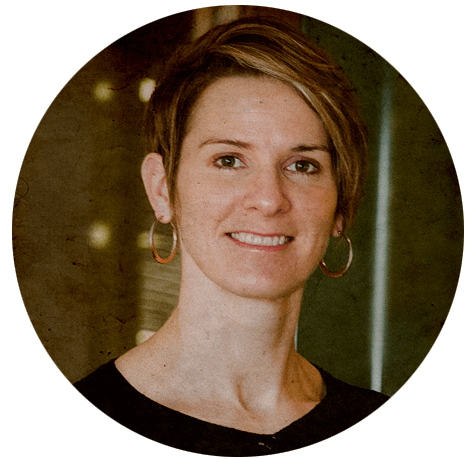
Gillian Groening [MBA/15] has worked in supply chain management for 20 years, at 3M and Price Industries, before taking on her new role as vice-president of international business at Price, the market leader in air distribution.
“For many companies, past supply chain decisions were made solely through the lens of per-unit cost, and I believe many are rethinking this now with additional focus on total cost of ownership and risk mitigation. I predict supply chains will shrink and buyers will be forced to purchase closer to home in order to mitigate risk in the near to medium term.
A lot of industries are going to re-weigh the costs and benefits of having international supply chains and will likely decide that it’s worth it to pay more for things to reduce risk to their business model.
There’s a lot of industries that will begin to redevelop in North America, and over the next 15 or 20 years we’ll see supply chains shorten up as businesses examine more than just their production costs. A long, international supply chain inherently comes with many risks, and it also makes quality control difficult because firms need to maintain relationships with suppliers and right now, on a practical level, there’s not too many people willing to traipse around the world to check in with suppliers.”

Adolf Ng is a former professor of supply chain management in the Asper School of Business who frequently advises organizations such as the United Nations, the European Commission, and the African Development Bank.
“Globalization is not dead and won’t die. It is a fact of life now, like the internet or smartphones. It’s not going away, but our relationship to it—our idea of it—will change.
The downsides to this system are starting to become more visible, especially during this pandemic—look at the availability of protective masks: very quickly they upended our assumption that goods are easy to get at a low price.
Cost has historically been important, but availability of products has quickly become just as important. I think countries will increase domestic production of a lot of goods as a result.
China is still going to be a big producer, but things are going to diversify, and a lot of technologies like robots and AI at ports will help lower costs back down after they go up a bit.
Our perspectives are changing. Perhaps we want more variety at higher costs, or perhaps we want to achieve some sort of social justice with the globalization system. So, the challenge facing globalization right now is how we interpret it, and how are we going to achieve it.
We have collectively reinterpreted globalization many times and we are in the long process of once again drawing up a new social contract with each other to reinterpret what globalization means.”
BUY NOW: Hospitals that won’t make you sick
Window drapes, hard to clean and generally dirty at the best of times, were one of the first things to go. Hospitals nixed them upon rethinking themselves after COVID-19. Hospitals have long been experimental buildings, constantly mutating through upgrades and renovations, and that’s never been more true.
Tents that create negative air pressure spaces to keep infectious diseases from escaping are the preferred method of many hospitals on shoestring budgets looking to house mild cases of the severe respiratory infections that occur about every 10 years.
Wealthier hospitals have retrofitted wards to transform into negative pressure wings when required.
Many health authorities continue to evaluate ideas put forth by architecture firms from across the globe that show ways to convert convention centres and arenas and hotels—anything with large spaces and loading docks—into quarantine and triage centres in fewer than 14 days, taking pressure off the hospitals themselves.
Most health administrators envy the Rambam Medical Centre in Haifa, Israel, which can turn its underground parking lot into a 2,000-bed ward thanks to their foresight to incorporate infrastructure like oxygen tanks in the walls.
After COVID, hospitals stopped viewing breakrooms as an afterthought: they’re now an oasis for frontline workers needing respite.
Our expert from 2020 weighs in:

Dr. Anand Kumar is a UM professor of medicine, medical microbiology and pharmacology trained in critical care and infectious diseases who made international headlines when he published a paper on how coveted N95 masks could be sterilized using standard hospital equipment and reused during the pandemic.
“In the future, we will have to make hospitals function for the usual stuff, but be optimized for the next pandemic, and that means thinking about things in very granular ways.
For instance, do we change toilet design? COVID is like some other diseases and is present in stool, and it gets aerosolized when the toilet flushes. We need forward-thinking design and a lot of practical changes as we rebuild hospitals.
We built hospitals to care for patients at a time when the risk of infections spreading to health-care workers and other patients was, for the most part, limited to transmission by physical contact. So, handwashing was encouraged to limit that kind of spread, but masks were not routinely worn and when they were worn, they were often meant to protect the patient. We never anticipated a widely-distributed, highly-infectious and virulent viral pathogen that patients could transmit to health-care workers. So, we need to modify hospital designs and standard procedures to address this reality. We need to think of infection transmission in hospitals as a two-way street.
But do I think nurses will constantly wear masks? No. We can’t operate under the assumption that every patient going forward will spread pathogens because good care requires frequent visits and it’s too difficult to operate on a daily basis with this mindset. So we need to follow basic protocols, but have the ability to ramp up other protections immediately.
On the academic side too, we need to ramp up research into antivirals like we have with antibiotics. We need a bank of potential chemicals we can use to fight these pathogens and deep knowledge of their effectiveness against a variety of viruses—the same goes for antimicrobials—so we know what will work quickly and well.
We need to fund this basic research because we already know of a lot of viruses that could pose a threat to us if they undergo a mutation or otherwise make the leap to humans. We can predict what the next threat is to some degree, so we need to start preparing for these eventualities.”
Support for students
The pandemic brought unexpected challenges for everyone, including UM students. Limited employment opportunities and new technology requirements for online learning has left some students in need of additional financial help to continue with their studies.
Donate to the COVID-19 UM Student Technology Fund and join the alumni and donors who have already provided support to more than 2,300 students through both the COVID-19 UM Student Emergency and Technology Funds.







